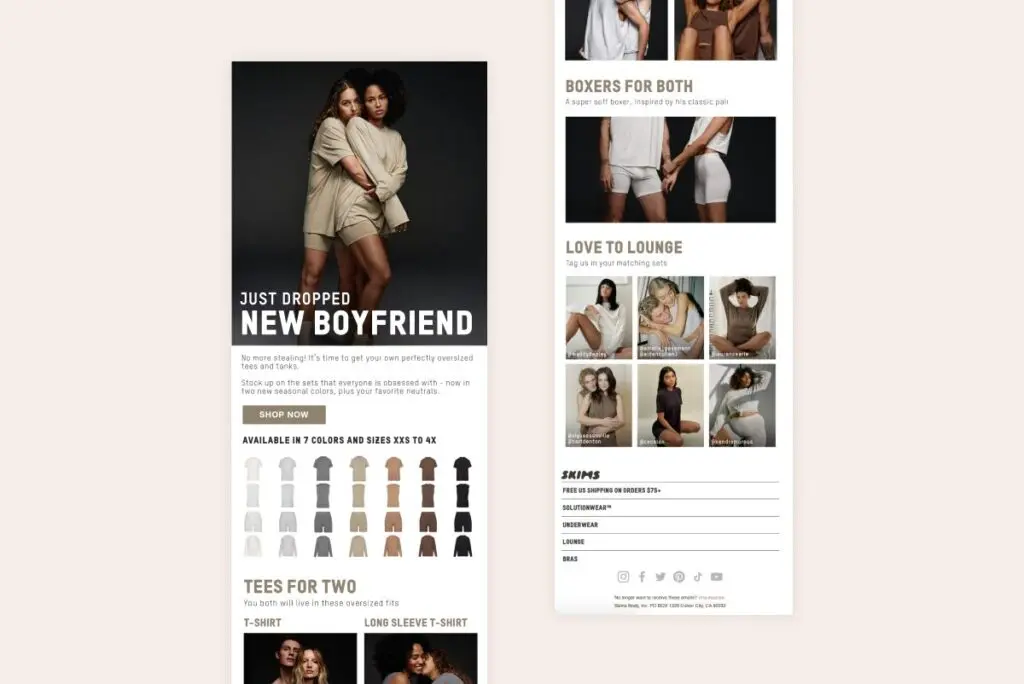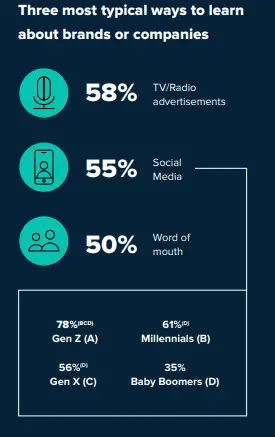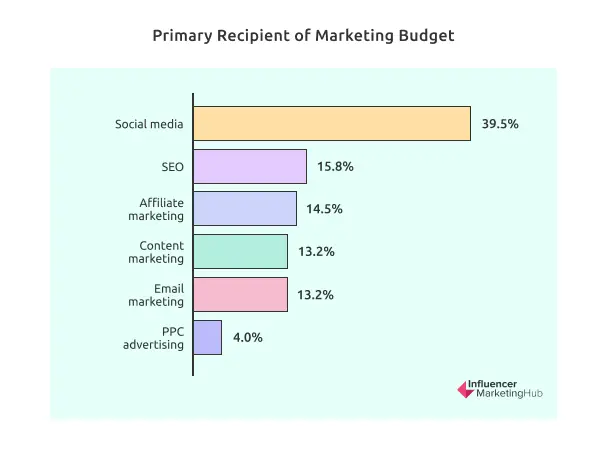We currently live in a time where everything that can be done online is being done online. The digital landscape has expanded significantly in the past few years, encompassing the business world, too.
Marketing, which was previously limited to our TV screens, newspapers, brochures, and billboards, has now found a new home in the digital world. This shift has given birth to a new form of marketing—digital marketing.
But what is digital marketing, and where does it fit in the grand scheme of things? The guide below answers your questions.
What Is a Digital Marketing Plan?
A marketing plan is a step-by-step guide that outlines the strategies and tactics a company will use to promote its products or services. A digital marketing plan, therefore, is implemented in the digital space.
Your company's digital marketing plan includes the tools and processes you'll use to accomplish your business objectives.
Is a marketing plan the same as a marketing strategy?
Although both terms are often used interchangeably, they actually serve different purposes. A marketing strategy is the overall approach or game plan to meet the end goal.
The marketing plan is the actual process of executing the strategy.
Let's take the example of a sustainable apparel company. Their marketing strategy may be to target environmentally conscious consumers through social media and influencer partnerships.
The marketing plan would then outline the specific tactics and channels. For instance, the marketing team might highlight three channels for marketing:
- Social media
- Paid advertising
- Email marketing
Each of these channels would further have specific processes. For example, on social media, the brand may work with influencers.
In paid advertising, they may use Google Ads.
And for email marketing, they may use a combination of newsletters and targeted campaigns.
This breakdown of channels and processes is what makes up the digital marketing plan.
Importance of a Digital Marketing Plan
There are many digital channels where you can market your company's offerings. Social media, email, website, and paid advertising are just a few examples.
However, without a well-defined plan, your marketing efforts may lack direction and consistency.
A digital marketing plan provides structure to your campaign. It outlines the goals, target audience, messaging, and channels to be used.
A marketing plan also fosters team alignment. Since everyone is on the same page, it becomes easier to work towards a common goal.
When you have a clear digital marketing plan, it also becomes easier to measure results. You can set key performance indicators (KPIs) before the campaign and track progress against those targets.
Types of Digital Marketing Plans
The categorization of digital marketing plans can vary depending on the source. However, broadly speaking, there are five types of digital marketing plans.
Time-Based Plans
One way to differentiate digital marketing plans is by the duration of the campaign. Your marketing plan could be annual or quarterly.
Quarterly marketing plans focus on short-term goals. For example, as a fashion brand, you may want to launch a collection for Valentine's Day.
Your marketing plan could cover the three months leading up to Valentine's Day.
Annual plans take a long-term approach. They outline marketing initiatives that will run throughout the year.
For instance, your annual plan may include monthly email newsletters and quarterly website refreshes.
Campaign-Specific Plans
Campaign-specific marketing plans are designed for a particular product launch, event, or promotion.
It comprises a targeted strategy and budget for that specific campaign.
McDonald's marketing campaign for Grimace's birthday is a good example. The fast food giant took a culturally relevant marketing angle and brought back their popular mascot from the 80s to promote their limited edition menu items.
YOU'RE INVITED: McDonald's Celebrates Grimace's Birthday with Special Meal & Shake (Starts June 12)
byu/BlankVerse inMcDonalds
The campaign garnered over 3 billion views on TikTok and resulted in an 11.7% increase in the company's global revenue in Q2 of 2023.
@mcdonalds gotta look good for my bday #grimacesbirthday #grimaceshake #mcdonalds ♬ original sound - McDonald’s
Chris Kempczinski, McDonald's CEO, hailed Grimace as the theme for the quarter and mentioned it to be "another proof point of the power of marketing at McDonald's today."
All the marketing efforts around the campaign, including the social media hashtag and limited edition merchandise, ended when the campaign did. So, the marketing plan was specific to the campaign.
Channel-Specific Plans
Digital marketing plans can also be created for specific channels. Some of them include:
- Social media
- Email marketing
- Pay-per-click (PPC) advertising
- Search engine optimization (SEO)
- Influencer marketing
- Content marketing
- Website
Envato Elements, a marketplace for creative assets, is a good example. They have a PPC campaign, under which they run ads on Google.

Envator PPC ads
Their website is also optimized to rank high on search engine platforms.
They have a blog on their website to tap into content marketing. Their content hub provides company news and updates for creatives.

Envato blog
Their social media strategy involves a heavy focus on YouTube, where they host creators, share marketing trends, share tutorials, and introduce their products.
Similarly, you could create a marketing plan for each channel you plan to use in your digital marketing strategy.
Product Launch Plans
Much like campaign-specific marketing plans, a product launch digital marketing plan is also short-term. It is aimed at generating buzz around your product.
A product launch marketing plan could include influencer and celebrity collaborations to get the word out about your product. You could also run social media campaigns and contests to create excitement.
Kim Kardashian's shapewear brand, SKIMS, is an ideal example here.
The company uses social media to promote their new products, featuring influencer partnerships and using organic reach. In a recent underwear line launch, SKIMS partnered with Usher and other celebrities to create hype.

SKIMS ads story
SKIMS also sends weekly newsletters to their email subscribers, updating them on new product launches and promotions.

SKIMS email new product launch
The goal of product launch marketing plans is to generate immediate sales for the product. After the initial buzz, the focus shifts towards maintaining a steady stream of sales through ongoing marketing efforts.
Growth Plans
A growth digital marketing plan focuses on growing the brand's reach. It could be through:
- Audience expansion
- Collaborations with other brands
- Influencer partnerships
- Paid advertising
The goal is to bring in new customers or subscribers.
Growth plans are ongoing and long-term. Loyalty programs are an example in this regard since they help retain customers while also attracting new ones. The Body Shop’s loyalty club is one such example.

The Body Shop loyalty club
Components of a Digital Marketing Plan
Before we go on to explain how to create a digital marketing plan, let's look at its components.
Website and SEO
Your website represents your brand on the web. Ideally, you want it to be well-designed and responsive. It should also follow the guidelines set by Google to appear higher up in search engine page results (SERPs).
For example, at Influencer Marketing Hub, our website is optimized for keywords.

Influencer Marketing Hub website
It's also mobile-friendly and easy to navigate. We use images and illustrations to keep our audience engaged.

Influencer Marketing Hub website
Content Marketing
''Content is king'' is among the most popular beliefs in digital marketing for the right reasons. Your site's content is what attracts potential customers.
In a digital marketing plan, the content acts as a vehicle to deliver your brand's message. It can also provide value to your audience, encouraging them to engage with your brand.
Influencer Marketing Hub's content marketing strategy involves producing high-quality and informative blog posts.

Influencer Marketing Hub content
Email Marketing
According to Influencer Marketing Hub's 2023 digital marketing report, email marketing has an ROI of 14.1%. So, it must be a part of your marketing plan.

Marketing channels ROI
Email marketing allows you to:
- Reach a highly targeted audience
- Tailor messages to suit individual customers
- Automate communication with leads
- Send promotions to existing customers
- Introduce new products
Paid Advertising
A marketing plan does not have to be exclusively organic. It can also include paid advertisements on search engines and social media platforms.
For example, Mailchimp runs Google Ads to appear higher up in search results for keywords related to email marketing.

Mailchimp PPC ads
Social Media Marketing
Social media platforms like Facebook, Instagram, Pinterest, X, and TikTok are also a part of a comprehensive marketing plan.
Research shows that 43% of social media users follow a brand, while 45% like posts on a company's social media accounts. More importantly, 55% of consumers learn about a brand from social media.

Typical ways for customers to learn about brands
So, a strong social media presence is imperative. According to our report, companies allocate 39.5% of their marketing budgets to social media, which is higher than any other channel.

Primary recipient of marketing budget
Influencer Marketing
Influencer marketing involves collaborating with influential individuals on social media to promote your offerings. It's a good way to reach new audiences and broaden your reach.
Your marketing plan could include both macro and micro-influencers. The latter are suitable for lower-budget campaigns.
They are also more niche-focused, allowing you to target specific demographics and interests. Micro-influencers are particularly effective for marketing to local audiences.
Affiliate Marketing
Depending on your product, affiliate marketing could also be a part of your digital marketing plan.
E-commerce sites like Amazon use affiliate marketing. The basic premise is that you pay someone a commission for each sale made through their unique referral link.
Your affiliates could be bloggers, influencers, or even satisfied customers.
How to Create a Digital Marketing Plan?
The steps for creating a digital marketing plan could vary depending on the nature of your business and target audience. However, here are some standard steps.
Step 1: Define Your Goals
What do you want to accomplish with your marketing plan? Take note of the types of digital marketing plans we discussed above.
For example, if you opt for product launch marketing, your goal could be to generate leads for your new product.
Let's say your goal is to get 1,000 subscribers for your software in the first month.
What if you choose growth marketing? Your goal could be to increase website traffic by 20% in the next quarter.
The same applies to other types of marketing plans, too. Your goals will depend on the type of marketing plan you choose.
Step 2: Build Buyer Personas
Who is buying your product?
Know your audience before you create a marketing plan. Let's say you're a health coach targeting women aged 25-45 who are interested in fitness and weight loss.
Your buyer persona would be:
- Age: 25-45
- Gender: Female
- Interests: Fitness, Weight Loss
- Income: Middle to High Income Group
You can group your buyers based on multiple factors like:
- Demographics
- Interests
- Behavior
The more accurate your buyer personas are, the more targeted the campaign will be.
Step 3: Analyze Your Market Position
Your market position is how your product or service stands up against the competition.
For example, if you're starting out in a crowded market, you may need to focus on building brand awareness. You have to convince prospects that your offering is better than your competitors.
If our product is an innovation in the market, your marketing should be more informational and educational. You want to tell people what your product does and why they need it.
You can conduct a SWOT analysis to gauge your market position.
- Strengths: What sets you apart from your competitors? For example, your product may be more pocket-friendly.
- Weaknesses: What areas do you need to improve on? Your product may have a shorter lifespan compared to competitors.
- Opportunities: Are there any gaps in the market that you can take advantage of? Maybe you could cater to students or young Gen Z who can't afford the higher-end product your competitor is offering.
- Threats: Are there any potential barriers to entry into the market? Besides competitors, these could be economic or political factors that may affect your business. For example, your industry may have strict regulations that make it difficult to operate.
Step 4: Select Your Marketing Mode
Do you plan to do it in-house or outsource?
In-house marketing gives you more control over the direction and execution of your campaigns.
However, it requires time, resources, and expertise. If you have a limited budget or lack the necessary skills, outsourcing may be a better option for you.
Nowadays, it's not hard to find a digital marketing agency that meets your needs. You can even find an agency by industry, such as real estate or healthcare.
If you have an in-house marketing team, decide the roles and responsibilities of each member. For example, you can divide your team by channel, such as social media, website, paid advertising, and content creation.
Alternatively, teams can be made based on projects or campaigns. For example, Team A handles all product launches, Team B takes care of ongoing marketing, and Team C manages all promotional or holiday campaigns.
Step 5: Set Your Marketing Budget
Every marketing plan needs a budget. You don't want to overspend or underspend. Also, you want to spend the right amount on the right channel.
One way to set the budget is to break down the components of your marketing plan as we've mentioned earlier. These components are website, email marketing, social media, content marketing, etc.
Allocate an amount to each component. For example, you may choose to spend $10,000 on paid advertising, $5,000 on social media marketing, $10,000 on email marketing, and $8,000 on influencer marketing.
It's best to use historical data for budget allocation.
If you get most of your conversions from social media, then it makes sense to allocate a larger budget for that channel. However, also invest in other channels to diversify your marketing efforts.
Step 6: Choose the Marketing Channels
Now, you've come to one of the most important steps. Here's what to base this decision on:
- Target Audience: Which channels does your target audience use the most? That's where you need to be most active. For the younger lot, this is usually Instagram or TikTok. For older users, Facebook is still a popular choice. Fashion, DIY, and decor-related businesses should opt for Pinterest. Email works for most audiences.
- Type of Content: Different channels are suitable for different types of content. For example, if your marketing relies heavily on visual content, Instagram, TikTok, and Pinterest are the way to go. For written content, Facebook and LinkedIn are ideal platforms.
Don't limit yourself to social media. Website, search engine, and email marketing are just as important.
If you have a limited budget, prioritize marketing channels instead of trying to cover all of them.
Suppose you're a small business with a tight budget. For you, it's better to invest in a website and social media marketing before branching out to paid channels.
For example, Sacheu Beauty, a small business, uses social media to show its products in action. The company also works with micro-influencers and UGC creators.
Similarly, let's say you're a makeup brand coming out with a holiday collection. Since your campaign is time-specific, the best channels for you are social media and influencer marketing.
Both of these channels are quick, which is just what you need.
For example, when ColourPop collaborated with Animal Crossing to create a new collection, they worked with influencers and beauty gurus to get the word out.
Step 7: Create a Calendar
If you've planned a quarterly campaign, create a calendar for those months. Otherwise, you should have a calendar that spans the whole year.
Your marketing calendar should include important dates for:
- Product launches
- Holidays/seasonal events
- Industry-specific events and conferences
Some channels will also require their individual calendars. For example, you'll need a social media calendar. A website content calendar is also a must for content marketing.
Here, you can plan out the content and dates for posting on each platform.
Similarly, an email marketing calendar will help you stay organized with your email campaigns. You can schedule when to send promotional emails and when to send newsletters or updates.
A calendar keeps you organized. It also shows the whole team what they need to be working on and when.
If there are any overlapping events on the calendar, you can plan for them beforehand. Suppose you're launching a new product close to Black Friday.
Now, you have two marketing campaigns going on at the same time. If you create a calendar and designate responsibilities at the beginning of the year, you won't have to work in a panicked frenzy when November rolls around.
Step 8: Set KPIs to Review Performance
Set metrics to measure your success. These could be:
- Platform-specific Metrics: Each platform has its own set of metrics to track. For social media, it could be engagement rate, follower growth rate, likes, comments, impressions, etc. For email marketing, open rates, click-through rates, and conversion rates are important to track.
- Website Metrics: Website traffic, bounce rate, session duration, and conversion rates are some KPIs to track. If you're running an e-commerce website, track metrics like cart abandonment rate and average order value.
- Search Engine Metrics: For SEO, track metrics like organic traffic, keyword rankings, backlinks, and on-page optimization.
- Overall Business Metrics: At the end of the day, your marketing efforts should contribute to your overall business goals. ROI is obviously the most important metric to track, but other metrics like customer acquisition cost and lifetime value of a customer are also useful.
Step 9: Adjust Your Marketing Plan
Measure your campaign against the KPIs you set and make necessary adjustments.
Let's say you discover that your social media campaign is not performing as well as you hoped. Analyze your social media posts to see which ones perform better than others.
Maybe Reels get more engagement than regular posts on social media. Going forward, create more of them.
Similarly, your website data may show people stay longer on pages with videos. Include more videos in your posts in the next quarter.
Conclusion
Think of your digital marketing plan as the blueprint for your online success. There are no hard-and-fast rules in digital marketing.
You have to try different things to determine what works for you. Be it social media or content marketing, don't skimp on KPI analysis.
If you're not confident in your in-house marketing capabilities, get a digital marketing agency on board. You don't have to hand over your entire marketing plan to them.
Instead, you can also get specialized services like product launch assistance and influencer marketing. The bottom line is to adapt and evolve your plan based on data and seek help when needed.



